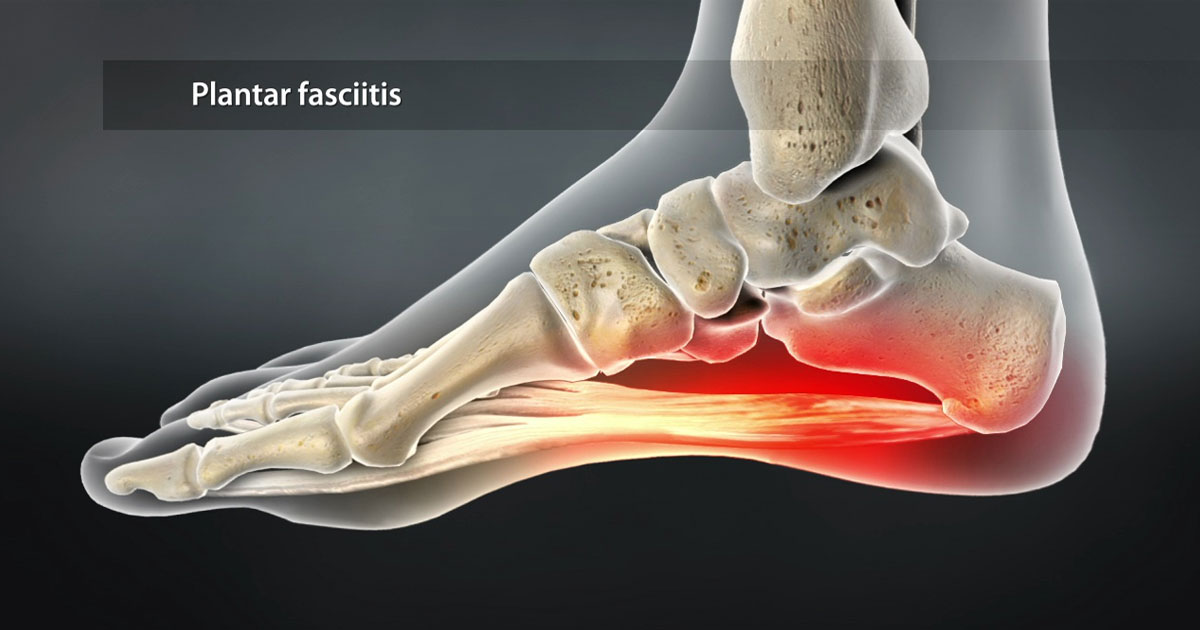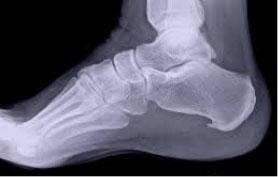
Plantar Fasciitis and Heel Spurs
Plantar fasciitis is a condition that causes pain in the heel and bottom of the foot. It occurs when the plantar fascia, a thick band of tissue that connects the heel bone to the toes and supports the arch of the foot, becomes inflamed or irritated. This tissue helps absorb shock when you walk, but excessive strain or tension can cause tiny tears in the fascia, leading to pain and inflammation.
Heel spurs are often associated with plantar fasciitis. However, not all people with heel spurs experience pain. The pain, when present, usually feels like a sharp, stabbing sensation, especially when taking the first steps in the morning or after long periods of rest. A heel spur is a bony growth that develops on the underside of the heel bone (the calcaneus). It typically occurs where the plantar fascia (a band of tissue that connects the heel to the front of the foot) attaches to the heel. Heel spurs can develop over time due to prolonged stress and strain on the muscles and ligaments in the foot.

Key Features of Plantar Fasciitis:
Pain Location
- The pain is usually felt on the bottom of the heel but can also extend along the arch of the foot.
Pain Characteristics
- The pain is often sharp, especially with the first steps in the morning or after periods of inactivity.
- The pain typically improves with movement but can worsen after prolonged standing or walking.
Common Causes
- Overuse or repetitive stress: Common in runners, dancers, or people who stand or walk for long periods.
- Foot mechanics: Flat feet, high arches, or abnormal walking patterns can put extra stress on the plantar fascia.
- Improper footwear: Shoes without adequate arch support or cushioning.
- Age: Plantar fasciitis is more common in people between the ages of 40 and 60.
- Weight gain: Being overweight or obese increases the pressure on the plantar fascia.
Prognosis of plantar fasciitis:
Most cases of plantar fasciitis improve with conservative treatments like rest, stretching, proper footwear, and physiotherapy, though recovery can take several months.
Treatment for plantar fasciitis and heel spurs:
1. Physiotherapy
- Physiotherapists can provide specialized techniques like soft tissue mobilization and manual stretching. Research published in Physical Therapy suggests that manual therapy, in combination with therapeutic exercises, accelerates recovery.
- Exercises involve stretching of the calf muscles including flexor hallucis longus and tibialis posterior. As well as strengthening of the intrinsic muscles of the foot. At Sports and Spines Physiotherapy we can take you through a specific exercise programme for plantar fasciitis.
- Taping the arch of your foot can also provide relief (called low dye taping), your physiotherapist at Sports and Spines physiotherapy will be able to do this and show you how to do it yourself.
2. Footwear and Orthotics
- Supportive shoes: Proper footwear with arch support and cushioning can reduce stress on the plantar fascia. A study in The Journal of Foot and Ankle Research showed that individuals wearing shoes with good arch support had reduced pain and improved functionality.
- Custom orthotics: Custom-made orthotics provide specific support for individuals based on their foot shape and walking mechanics. A systematic review in The Cochrane Database of Systematic Reviews found moderate evidence supporting the use of orthoses for plantar fasciitis relief.
3. Night Splints
- Dorsiflexion night splints: Wearing a splint at night that keeps the foot in a slightly flexed position prevents the plantar fascia from tightening overnight. Evidence from a Journal of the American Podiatric Medical Association study supports the use of night splints to alleviate morning heel pain.
4. Icing and Anti-inflammatory Treatments
- Icing: Applying ice to the affected area for 15-20 minutes, several times a day, reduces inflammation and pain. Studies suggest that cryotherapy combined with exercise can be beneficial.
- Non-steroidal anti-inflammatory drugs (NSAIDs): Medications like ibuprofen or naproxen can help manage pain and inflammation in the short term, as supported by research in The American Journal of Sports Medicine.
5. Shockwave Therapy
- Extracorporeal shockwave therapy (ESWT): This non-invasive treatment involves using sound waves to promote healing in the plantar fascia. Meta-analyses in The BMJ and Journal of Orthopaedic Surgery found ESWT to be effective for chronic cases of plantar fasciitis that don't respond to conservative treatments.
6. Steroid Injections - Corticosteroid injections: For severe or persistent cases, a doctor might recommend corticosteroid injections to reduce inflammation. A study in the Journal of Foot and Ankle Surgery showed short-term pain relief with this method, though it may not provide long-term solutions and carries risks like fascia rupture. More often used when a heel spur is present.
8. Weight Management
- Weight loss: Reducing body weight can relieve pressure on the feet, which is often a contributing factor to plantar fasciitis. A study in Obesity Research & Clinical Practice linked weight reduction with improved outcomes for individuals suffering from this condition.
Important!
Early intervention with stretching, strengthening, and proper footwear is crucial for recovery for a quicker recovery.
